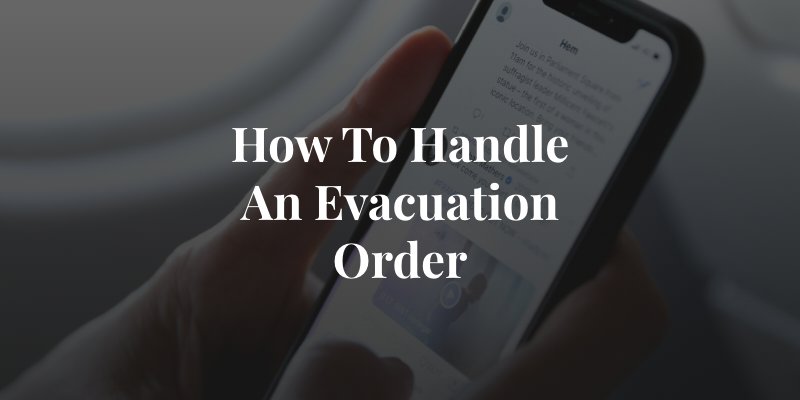As the dust settles and the path toward recovery begins for the thousands of families affected by the recent LA wildfires, this incident highlights the importance of preparedness and taking action at a moment’s notice in the face of a blaze. Unfortunately, trends indicate that the reality of wildfires is here to stay. If you are facing the risk of a wildfire, knowing how to take a timely response can save lives and reduce chaos when the time comes to evacuate.
Understanding Evacuation Orders
Depending on the issuing agency, evacuation orders vary in name and requirements but are intended to accomplish the same goal of preventing bodily injury. Most agencies follow three levels of classification which depend on the severity of risk that area is facing. Your response to an evacuation order should depend on the type of order you have received.
Level 1 Evacuation Order
A level 1 evacuation or protection alert means that a wildfire threat is in your area. Don’t assume you are out of harm’s way with a level 1 evacuation order. You may still be exposed to danger such as smoke inhalation and emotional and psychological trauma according to the Eaton Fire lawyers at Bridgford Law.
What To Do
If you receive this evacuation or protection alert, it is advised to consider planning an escape route and packing essential items in the event an evacuation becomes necessary.
Level 2 Evacuation Order
An evacuation warning or notice indicates a high likelihood of necessary evacuation.
What To Do
Begin packing necessary items and preparing your family, pets, and vehicle for a potential departure. The USDA offers the 6-Ps for evacuation preparation:
- A Plan for the entire family, including a meeting place.
- Personal items to last you at least 2 to 3 days including toiletries, food and water, and special personal possessions.
- Prescriptions.
- Photographs and other irreplaceable mementos.
- Pets safely secured so they don’t escape while frightened.
- Papers including important documents, reference phone numbers, account numbers, etc.
People with mobility or medical issues should be moved in a level 2 evacuation order. Use common sense and evacuate at any time if you feel uncomfortable or see active fire behavior.
Level 3 Evacuation Order
Occupants receiving an evacuation request or order are asked to leave within a specified time-period through designated routes. If you receive this evacuation order, danger is imminent.
What To Do
Now is the time to evacuate. Take your family, pets, and necessary items if you receive this alert. Check-in with your local Red Cross shelter and let them know where you will be staying in case your family is looking for you, even if you do not intend on staying at the shelter. When evacuating, drive safely and slowly while remaining vigilant of your surroundings.
Safe Evacuation Practices
If you are forced to vacate your home, you must protect yourself and your family for a safe egress.
Protect Yourself
Wear fire-resistant clothing. Layer up in clothing with natural fibers as they are mildly resistant to flame. Wear sturdy shoes suitable for running. Carry a mask capable of filtering smoke, such as a KN95.
Travel Smart
Ensure your vehicle is properly fueled, windows are closed, and air is set to recirculation. Don’t overpack and be ready for a quick getaway.
Follow Evacuation Orders
The evacuation route is typically designated by local authorities. Don’t deviate from the set route.



No Comment